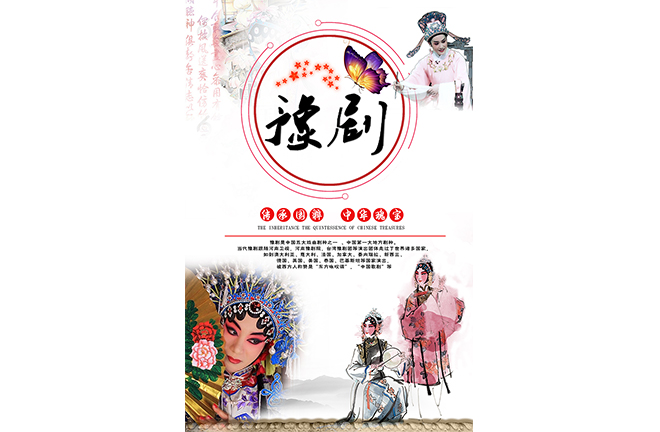ICH goes global via digital exhibitions

The Yuju opera inherits and develops fine traditional Chinese culture. Photo: TUCHONG
In recent years, international exhibitions have played an important role as a communication medium connecting the inheritors and recipients of Chinese civilization as the intangible cultural heritage (ICH) goes global. This is particularly evident when international exhibitions seamlessly incorporate digital technologies, instantly transforming the ICH stories that once shone in history into tangible, experiential, and participatory living art. This enables international audiences to gain a deeper appreciation for the beauty of craftsmanship, ingenuity, and intellectual prowess inherent in Chinese civilization through new cultural experiences.
Bridging China and the world
International exhibitions are collective social activities that are open to global audiences, in regular or irregular, institutional or non-institutional forms, and include various cultural exhibitions, artistic performances, sporting events, international conferences, and more.
The continuous advancement of digital technologies has helped to empower ICH in going global. Given the diverse forms and exquisite craftsmanship inherent in China’s ICH, traditional exhibition methods often struggle to convey its profound cultural significance. The development of digitalization has provided an ideal pathway for the display and dissemination of ICH. Leveraging digital means such as Artificial Intelligence (AI), Virtual Reality (VR), Augmented Reality (AR), Natural User Interface (NUI), and 3D holographic projection technology, ICH skills and creations can be more easily “replicated” at exhibitions worldwide, overcoming multiple constraints such as physical location, personal experience, and material resources. Global audiences can immerse themselves in technologically-enabled scenarios that display ICH, transcending time and space to experience the charm of the ICH in the native environment.
Exhibition organizers are proactively adapting to market trends and attracting “traffic” by incorporating ICH elements. In recent years, the rise of “China-Chic” (the surge in popularity of domestically produced goods) has intersected with the enduring legacy of Chinese civilization, meeting the demands of contemporary audiences, new scenarios and evolving preferences. To expand the social influence of an event, exhibition organizers actively introduce Chinese ICH elements into its curation, aligning it with market orientation and public aesthetic sensibilities. Meanwhile, ICH has not only gone global, but also attracted the interests of international enterprises and brands. More and more overseas organizers are using Chinese ICH culture and stories as the key to opening the door to the international market.
ICH, as a globally shared language of communication, serves as a bridge for cultural exchanges between China and foreign countries. The inclusive and diverse cultural background carried by ICH can form a unique language of communication, promoting it to become an eternal bridge across ethnic groups, populations, and languages.
Future pathways
Cognitive breakthrough: The vitality of ICH has been fostered through experience. “Cognitive breakthrough” attempts to employ immersive exhibition and presentation approaches to instantly transform the previously superficial narrative into concrete and vivid cognitive sensations.
Connecting past and present: It is suggested to demonstrate the continuity of ICH through linking it with our daily lives. While ICH promoters use international conventions and exhibitions as mirrors of social fashions to expose overseas audiences to culture with Chinese characteristics, they also demonstrate a keen awareness of contemporary social trends, popular culture and modern art to the world.
Emotional boundary-crossing: It is advised to activate the resonating effect of ICH through sympathetic narration. “Emotional boundary-crossing” refers to the cross-cultural transmission of ICH by appealing to emotional resonance. On one hand, the universal nature of human emotions enables audiences from diverse cultural backgrounds to share similar emotional experiences, thus granting emotional communication a distinct advantage in cross-cultural dialogue. On the other hand, the pursuit of benevolence and beauty is an aspiration shared by both Eastern and Western people, and both should be rooted in truth. The soft interactions based on true feelings provide a kind of natural intimacy for the communicators and recipients, making the overseas audiences more likely to develop progressive empathy for ICH while in a state of emotional arousal. International conferences and exhibitions of digitalized ICH provide an important opportunity for the communicators to establish an emotional framework and convey humanistic emotional care.
Liu Jiaqi is from the Institute of Journalism and Communication at the Chinese Academy of Social Sciences.
Edited by ZHAO YUAN
